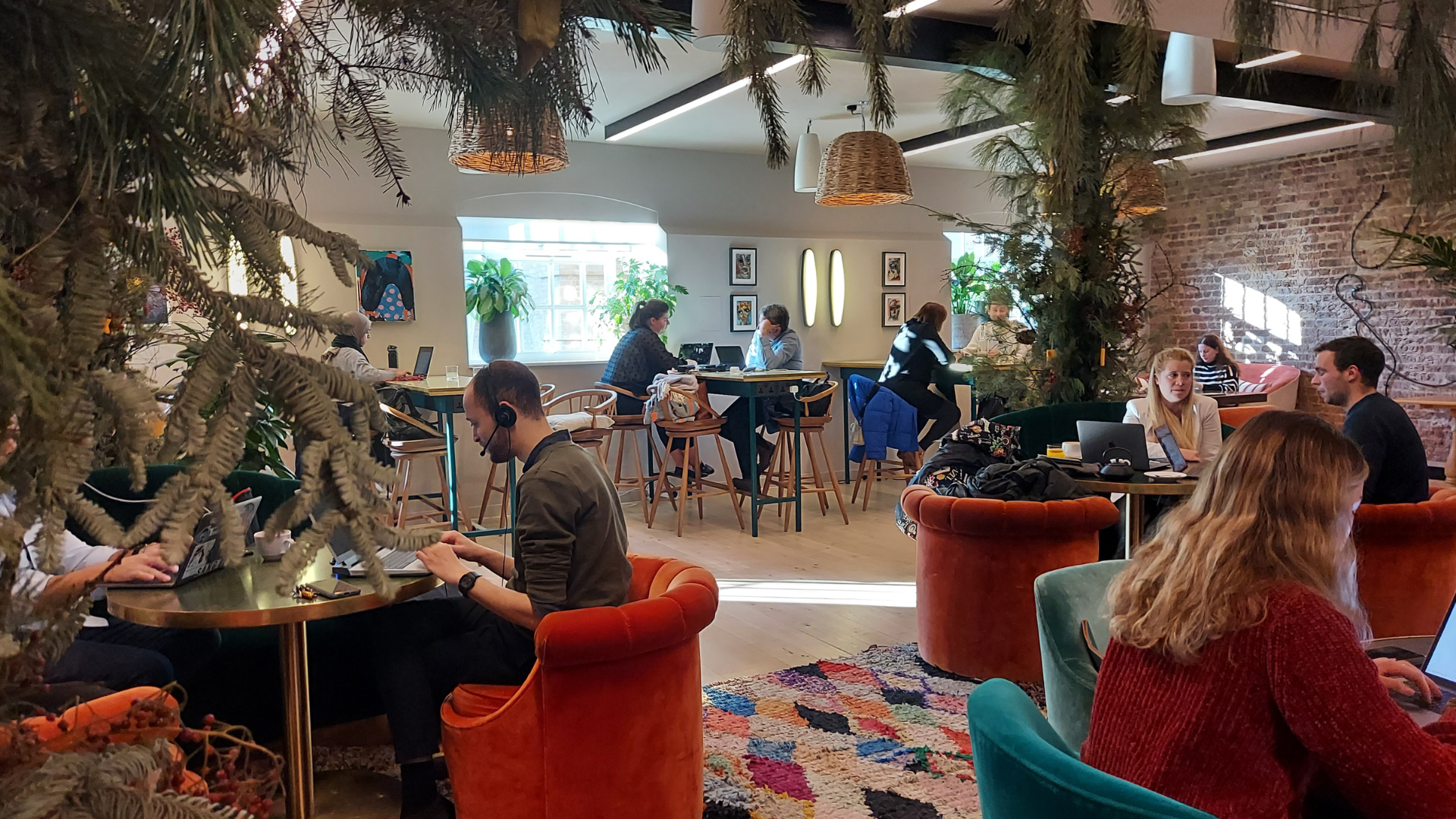For decades now, our cities have been scaling upwards, expanding outwards, and getting bigger in every sense of the word. The age of urbanisation has brought with it lots of benefits, not least of which the economic strength and market choice that large-scale cities offer, but the tide is beginning to turn.
Urban Land Institute reports that 71% of obsolete space in our cities and towns will be repurposed in the next five years. This change is partly being driven by a shift towards progressive planning concepts such as the 15-minute city, which aims to rewrite the way we work, socialise, and live by significantly shrinking the radius in which you need to travel.
As it grows in popularity, you should expect to see the ideas and values behind the 15-minute city begin to weave themselves into your life, whether you live in a city or not. Read on to learn everything you need to know about the concept, and why it’s relevant to the coworking and flexspace market.
What is the 15-minute city?
In very simple terms, the 15-minute city is defined as a form of urban planning that ensures all basic human needs and desires can be met within 15 minutes’ walking distance. The idea – elegantly named ‘la ville du quart d’heure’ – was developed by Professor Carlos Moreno at the Sorbonne in Paris and was co-opted as a cornerstone policy in a mayoral election in Milan. It’s based on research into how city-dwellers live, and inspired by the idea of the ‘rhythm of life’.
The idea is that, in a 15-minute city, you’d be able to walk 15 minutes or less and reach all of the amenities you need to live happily – from outdoor spaces to grocery stores, workspaces to schools. Reducing the time required to reach these facilities and unlock their benefits could help people to embrace healthier and more balanced lifestyles.
Despite the name, the 15-minute city isn’t a concept that’s limited to cities – so you might hear the term 15-minute town used instead. Both terms just refer to a style of planning that concentrates infrastructure and amenities in walking distance of those who need to use them. Benefits of this approach could include increased life expectancy and job satisfaction, reduced strain on public infrastructure, and reduced CO2 emissions.
It’s worth noting that the 15-minute city concept is really just a concentrated example of a wider trend – localisation, or the distance between the things you need shrinking rather than expanding. Localisation is a concept we’ve already covered in our post about the officeisation of the high street. Extrapolating the concept out to a country-wide scale means increased spending in town centres, villages, and even rural areas, which helps to grow and support local economies.
Working in the 15-minute city
The world is currently orientated round cities and their surrounding population centres (i.e. suburbs, commuter towns). The traditional office model requires workers to commute to a centralised office, usually in one of these urban centres.
In the world of the 15-minute city and localised amenities, there will be a paradigm shift which enables the population to work much closer to home, minimising the importance of cities in worklife and reducing the prevalence of commutes. This is facilitated by the technological revolution, which means that remote work is now completely achievable for most modern businesses.
If you live in a city, you might already be within 15 minutes of your office but, if not, the proliferation of the 15-minute city will almost certainly mean you end up with a flexible workspace within walking distance of your home. For the majority of the population who live in suburbs though, the effects of localisation might completely change the way you live. Instead of commuting into the office, you could benefit from a ‘work near home’ model, where you have the choice to mix working from home with working from a local flexible workspace.
Town centres as live-work destinations
The number of coworking and flexible office spaces in town centres is increasing, increasingly in the form of high street retail destinations being annexed for use as office space. As this trend continues, there will be plenty of choice when it comes to workspaces, even outside of densely populated city centres.
Since all of the statistics seem to indicate that the idea of remote working isn’t going anywhere, this means that towns can start to compete with cities for occupiers. These remote workers would no longer have a need to commute into the city centre, instead taking a much shorter trip to their preferred local coworking space.
However, to properly compete with city centres, towns don’t just have to become good working destinations but good live-work destinations. City centres offer a lot outside of office space – from leisure and hospitality venues to the broadest retail experience. The flexible and coworking spaces that are popping up in towns and smaller urban areas need to recognise this, and turn themselves into destinations to rival the city experience.
Building the 15-minute future
The first steps towards 15-minute city planning reaching mass adoption have already been taken, with both localisation and mixed-use developments growing in popularity. The idea of thematic investing like this has yielded huge results for Brunswick Property Partners, with their Akoya development – unveiled in September 2020 – already making waves within the industry.
There are plenty of other exciting mixed-use ‘live-work’ destinations popping up, too. The proposed redevelopment of the City of London, for instance, aims to create at least 1500 new homes in the Square Mile, transforming it from a commercial hub to a much more liveable area. Nineyards in Kingston is another great example – an ambitious project that fits the 15-minute city brief perfectly, with plans for coliving, coworking, retail, and hospitality units to create a highly-functional area for modern workers.
If we see the trajectory of remote work’s popularity maintain its upward course over the next few years, the demand for better workspaces in more localised areas will be all but confirmed. Anticipating this demand and building the future of work now falls to coworking and flexspace operators.
To talk more about the 15-minute city, how it’ll change the way we work, or how you can meet the growing demand for town centre workspaces, book a call today.



